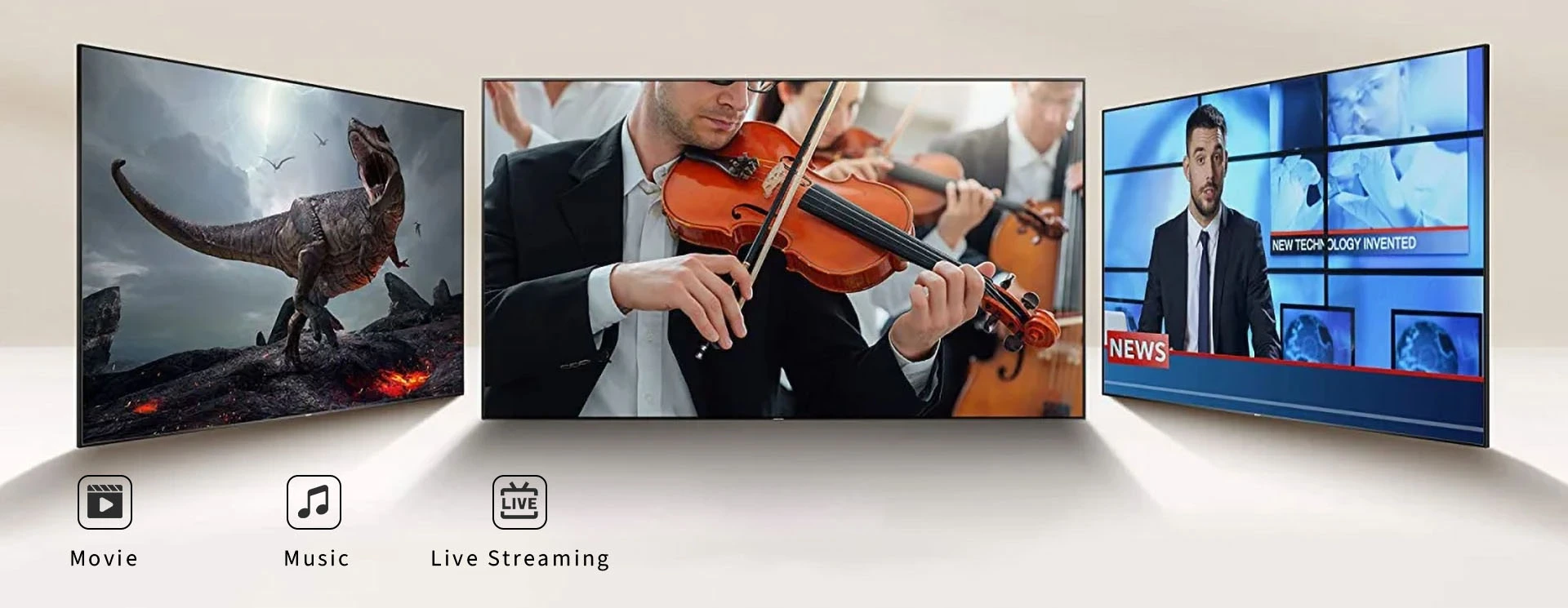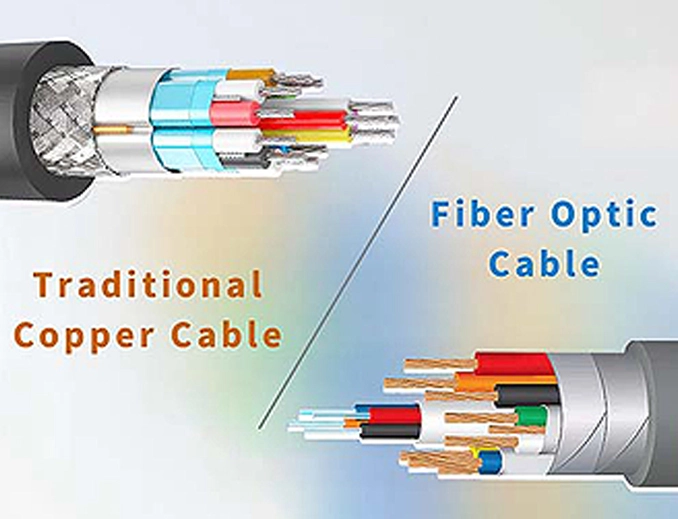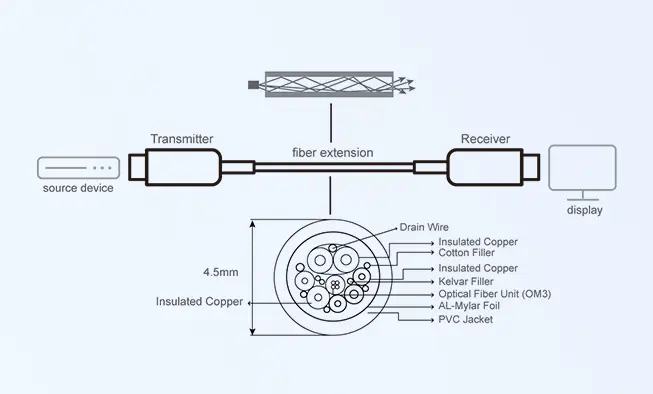

Fiber optic HDMI cable transmit audio and video signals through optical pulse technology, breaking through the limitations of traditional copper cables and supporting the transmission of high-bandwidth signals of 48Gbps over a distance of up to 150 meters. It supports up to 8K@60Hz/4K@144Hz video and uncompressed audio such as 5.1/7.1, ensuring high fidelity of image clarity and sound quality. Compared with traditional copper HDMI cables, fiber optic HDMI excels in signal integrity and long-distance transmission, and is thinner and lighter, not subject to electromagnetic interference, and has excellent durability and flexibility. Its ultra-thin design not only saves space, but also provides flexible installation options.
When choosing between HDMI options, it's important to understand the distinct capabilities and applications of HDMI 2.1 over fiber compared to regular HDMI over fiber.
Bandwidth Capability: HDMI 2.1 over fiber supports up to 48Gbps, ideal for high-performance devices, while regular HDMI over fiber's lower bandwidth suits only up to lower 4K resolutions.
Resolution Support: HDMI 2.1 over fiber supports 8K@60Hz and 4K@144Hz, essential for high-demand video devices, whereas regular HDMI over fiber typically handles up to 4K@60Hz.
Features: HDMI 2.1 fiber cable includes Dynamic HDR and eARC for improved picture quality and connectivity, unlike regular HDMI over fiber which lacks these advanced features.
Applicable Scenarios: HDMI 2.1 over fiber is ideal for long-distance, high-definition applications like high-end home theaters, while regular HDMI over fiber is suited for basic setups without the need for cutting-edge specifications.
Understanding these differences allows consumers and professionals to select the most appropriate HDMI solution for their specific needs, ensuring optimal performance and compatibility.
Yes, fiber optic HDMI cables are often better than copper HDMI cables for certain applications, especially those that require long-distance transmission and high signal quality. Fiber optic cables can transmit signals over distances of up to 300 meters without noticeable loss and are highly immune to electromagnetic interference. They support higher bandwidths and resolutions, such as 8K at distances of up to 300 meters, which makes them more suitable for future-proofing advanced display setups. In addition, their slim and flexible design makes installation easier and they operate reliably in challenging environmental conditions. While active optical cable is more expensive, their advantages in fidelity and interference resistance often outweigh the higher cost, especially for demanding audio-visual applications. However, for short, direct connections where cost is a major consideration, copper cables remain a viable option.


HDMI optical cable work by converting electrical signals from an HDMI source into optical signals, which are then transmitted as light through thin glass or plastic optical fibers. This light-based transmission method allows data to be transmitted over long distances with virtually zero signal loss and high immunity to electromagnetic interference. At the receiving end, the optical signal is converted back into an electrical signal for playback on a display device. This technology enables the cable to support high bandwidths and resolutions, such as 48Gbps 8K, making it ideal for high-performance audiovisual equipment.
 What is the difference between HDMI and optical HDMI?
What is the difference between HDMI and optical HDMI?
Ordinary HDMI (High Definition Multimedia Interface) cables transmit digital audio and video signals over copper wires and are suitable for short distances and general home use. HDMI over fiber cables transmit signals over optical fibers, using light to achieve high-speed, long-distance signal transmission without interference or attenuation. Therefore, HDMI over fiber is more suitable for scenarios with high-resolution requirements, such as supporting 4K/8K video, and transmission distances up to 300 meters.
 Are optical HDMI cables better?
Are optical HDMI cables better?
Compared to traditional copper HDMI cables, HDMI over fiber performs better in long-distance transmission. It is immune to electromagnetic interference (EMI) and has the ability to support ultra-high resolutions (such as 4K and 8K) and lossless transmission of uncompressed audio such as 5.1/7.1, while being lighter and more flexible. HDMI over fiber is particularly suitable for professional installations, long-distance transmissions, or high-interference environments.
 Are all fiber optic HDMI cables active?
Are all fiber optic HDMI cables active?
Yes, all fiber optic HDMI cables are active cables. These cables have built-in electronics that convert electrical signals to optical signals for transmission, and convert optical signals back to electrical signals at the receiving end. This design ensures that fiber optic HDMI cables maintain high performance over long distances.
 Are fiber optic HDMI cables directional?
Are fiber optic HDMI cables directional?
Yes, fiber optic HDMI cables are directional and need to be connected according to the "source end" and "display end". The "source end" of the signal needs to be connected to the sending device (such as a Blu-ray player, game console), and the "display end" needs to be connected to the receiving device (such as a TV, projector). If the directions are reversed, the signal will not be transmitted normally.

Whether you are interested in AOCFiberLink's products or have any other questions, we are always happy to help you understand the products and answer your questions.